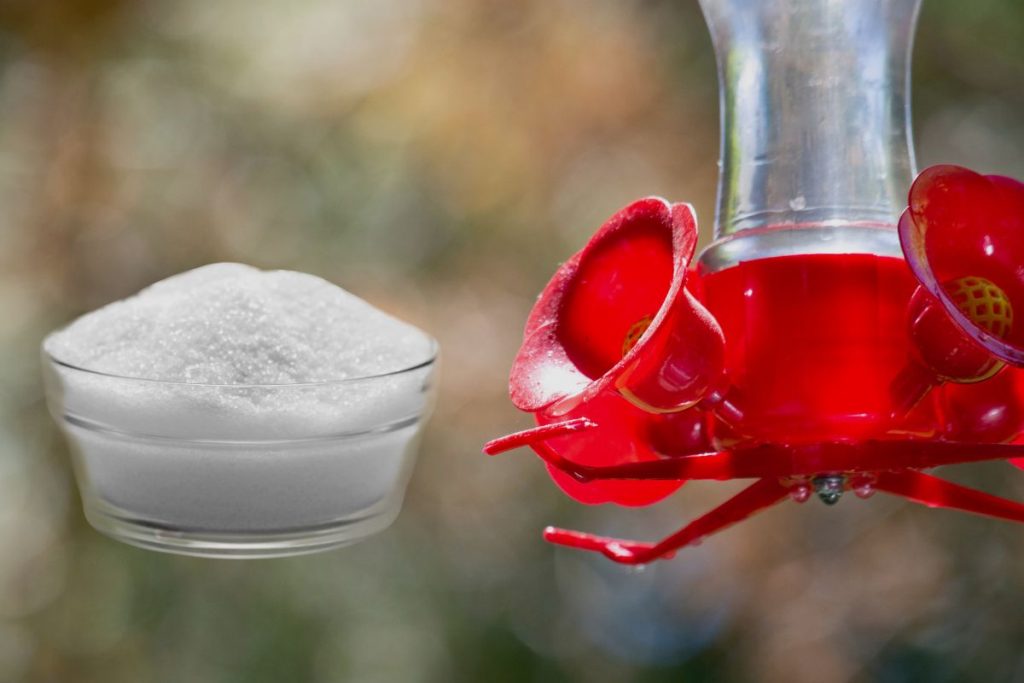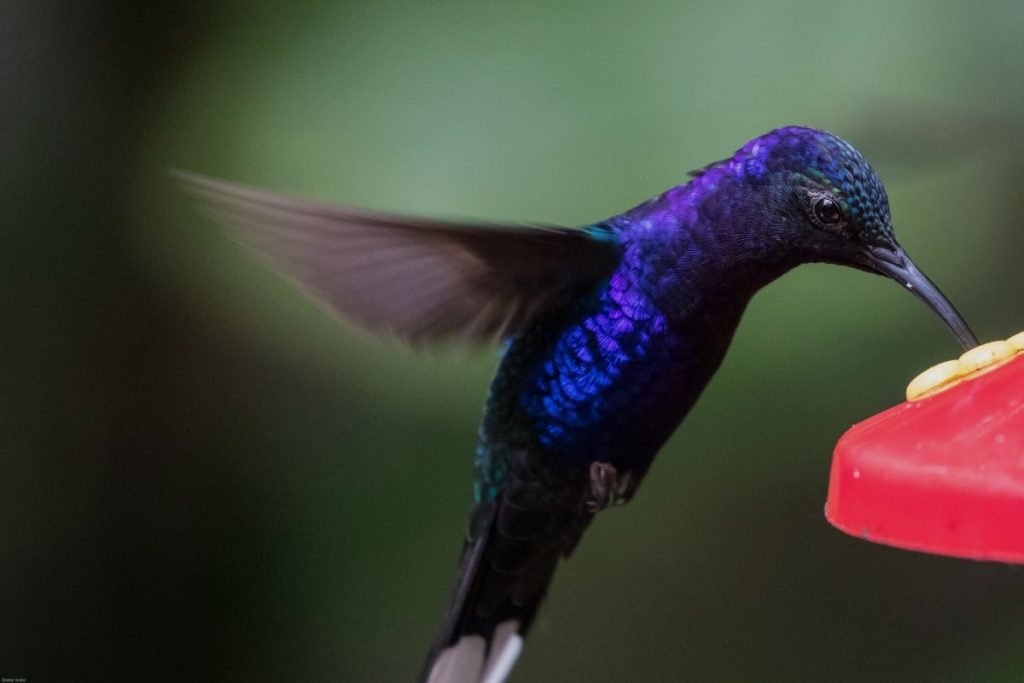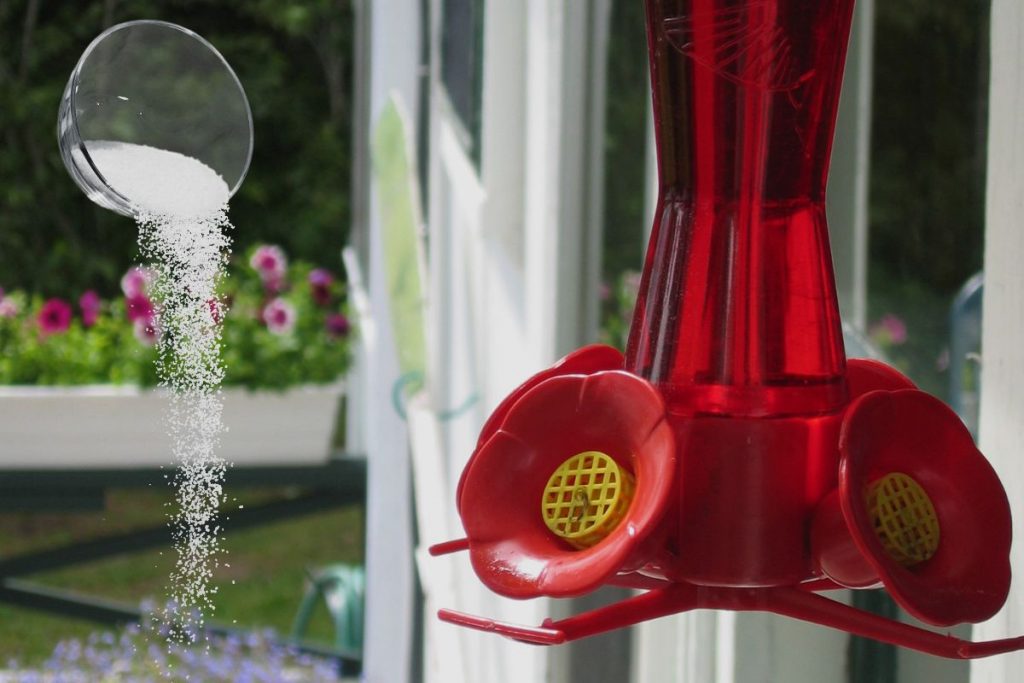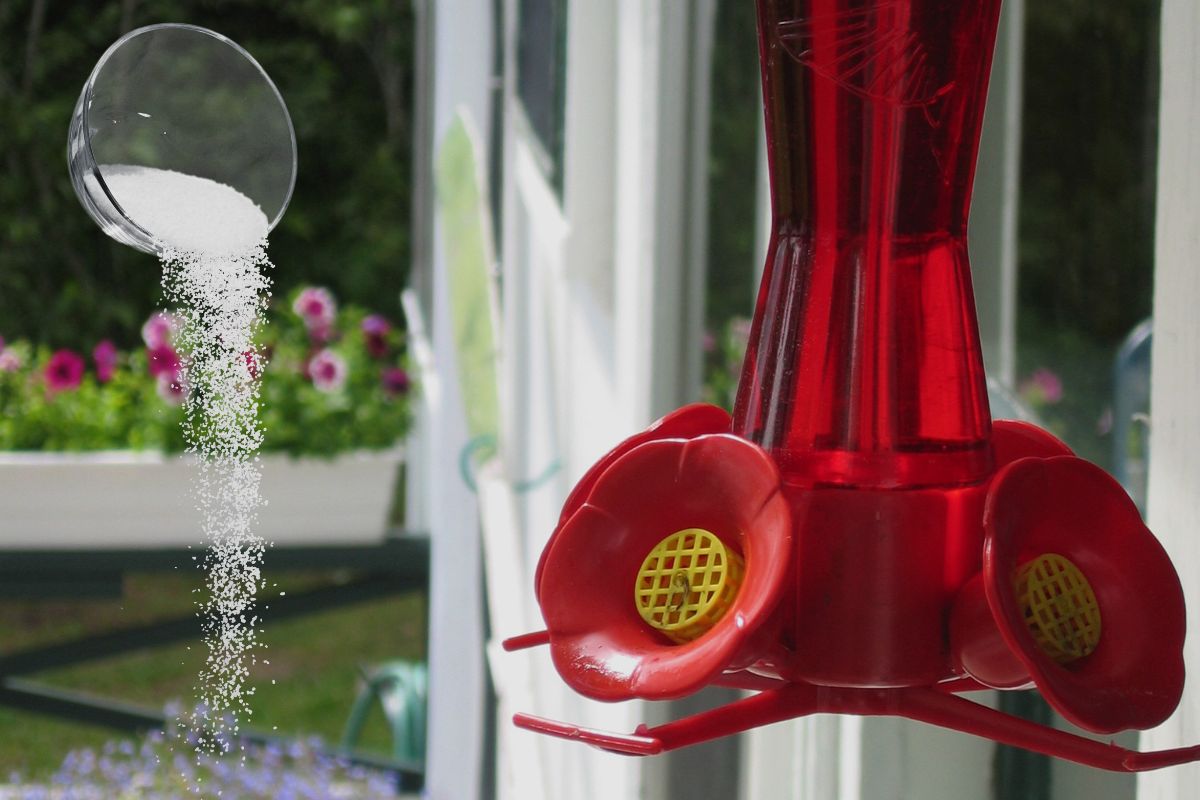Yes, it is possible to put too much sugar in a hummingbird feeder. Excessive amounts of sugar can lead to health problems for the birds, including an increased risk of disease and other complications. If too much sugar is used in the feeder, the birds may also become overweight, which can impair their ability to fly and move around.
The best way to ensure that your hummingbirds remain safe and healthy is to use a sugar-water mixture that contains no more than 4 parts water to one part sugar.
Related Posts:
Best Hummingbird Feeders.
Hummingbird Feeders Comprehensive Guide.

Ideal Sugar-to-Water Ratio for Hummingbird Feeders
When preparing nectar for your hummingbird feeder, it’s crucial to find the right balance between sugar and water. The ideal sugar-to-water ratio for hummingbird feeders is 1 part sugar to 4 parts water. This mixture closely resembles the natural nectar found in flowers, which is what hummingbirds typically feed on. Using the appropriate ratio is essential for the health and well-being of the hummingbirds visiting your feeder.
To create the sugar-water mixture, follow these simple steps:
- Measure out 1 cup of plain, granulated white sugar and 4 cups of water.
- Combine the sugar and water in a saucepan and heat gently, occasionally stirring, until the sugar dissolves completely. Avoid boiling the mixture, as this can cause the sugar to break down and become less nutritious for the birds.
- Allow the sugar-water mixture to cool to room temperature before filling your hummingbird feeder.
- Store any remaining nectar in the refrigerator for up to a week.
It’s important to note that you should not use alternative sweeteners, such as honey, artificial sweeteners, or brown sugar, as these can be harmful to hummingbirds. Additionally, refrain from using red dye, as it is unnecessary and may pose health risks.
Regularly maintaining your hummingbird feeder is crucial for the health of your visiting birds. Clean the feeder with warm, soapy water at least once a week, or more frequently in hot weather, to prevent mould and bacteria growth. Rinse the feeder thoroughly and refill it with fresh nectar.
By providing an optimal sugar-to-water ratio in your hummingbird feeder, you can ensure that these tiny, energetic birds receive the necessary nutrients and energy to thrive in their natural environment. Moreover, you’ll contribute to the preservation and support of local hummingbird populations, allowing them to continue their essential role as pollinators in your garden and the broader ecosystem.

Health Risks To The Birds
What are Possible Health Risks Associated with Too Much Sugar in a Hummingbird Feeder?
Excessive amounts of sugar in a hummingbird feeder can cause serious health risks for birds that consume it. An excess of sugar can interfere with a bird’s digestion and absorption of nutrients from its regular food sources, leading to malnutrition and other nutritional deficiencies. In turn, this can make birds more vulnerable to disease and other health complications such as infection or dehydration.
Also, overconsumption of sugary nectar can result in obesity among some species; this can impair their ability to fly and even cause fatalities due to decreased mobility.
Prevention Strategies
Avoiding Excessive Sugar in a Hummingbird Feeder
One of the best ways to prevent putting too much sugar in your hummingbird feeder, mix one part white granulated cane or beet sugar with four parts water when refilling the feeder.
It is also important not to use any artificial sweeteners or honey as these are not suitable for hummingbirds. Additionally, when using store-bought products such as nectar concentrates or powdered mixes, always follow the instructions on the label so that you don’t accidentally add too much sugar into your solution.
Ultimately, when cleaning out old solutions from your feeders, be sure to rinse them thoroughly before refilling them with a fresh solution so that any residual sugars do not accumulate and become harmful to the birds over time.
Conclusion
In conclusion, being mindful of how much sugar you put into your hummingbird feeders is essential to protect these fascinating birds from harm. By implementing the prevention strategies discussed, you can contribute to a vibrant and welcoming garden environment for these captivating visitors.
So, go ahead and observe the mesmerizing aerial ballet of hummingbirds, knowing that you’ve done your part to keep them safe and healthy.
Image Gallery – Can You Put Too Much Sugar In A Hummingbird Feeder?



